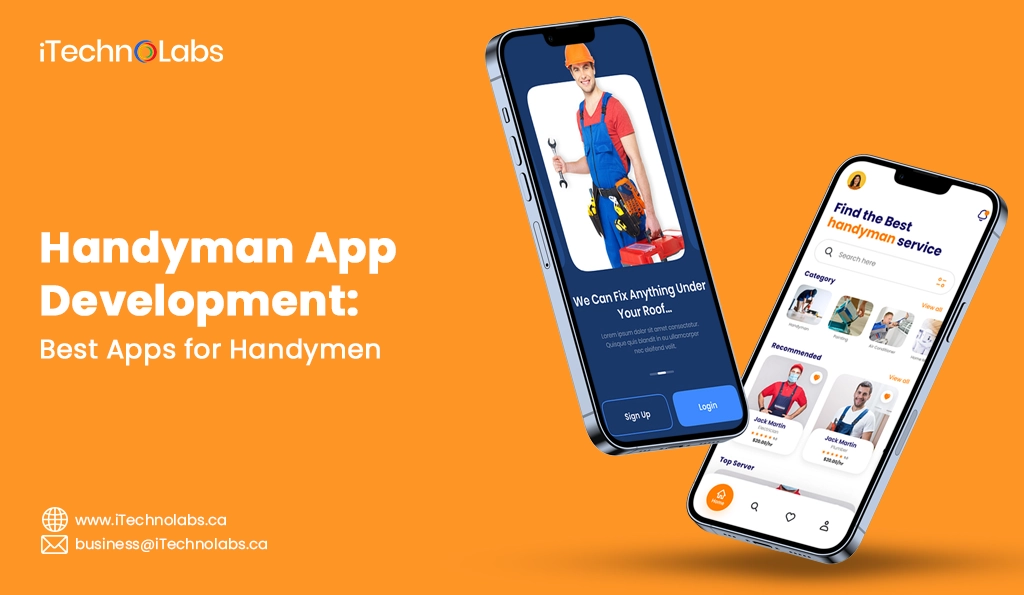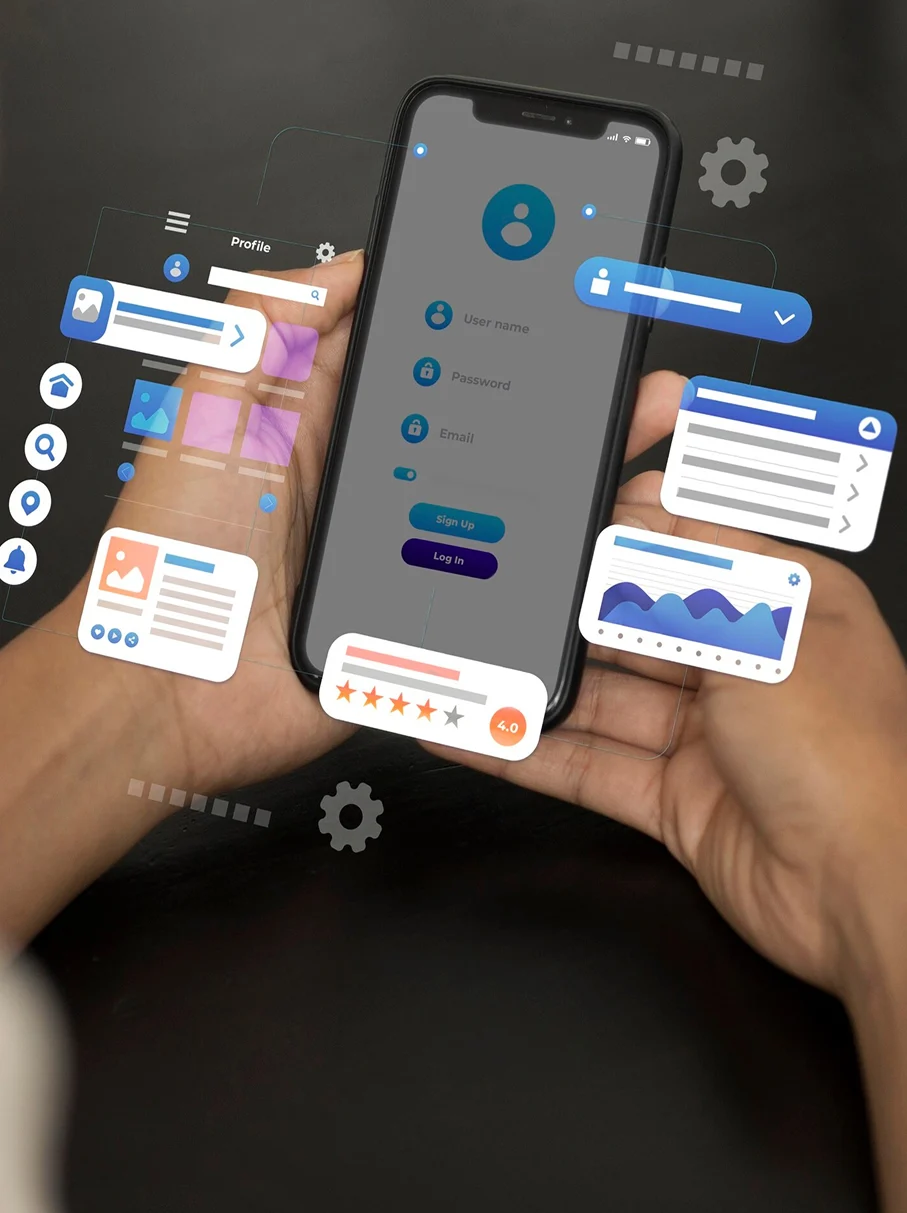Imagine this: It’s Saturday morning, and your kitchen faucet has started to leak. You grab your phone, open an app, and then moments later you’ve got a professional handyman on their way to repair it. No searching through directories or waiting; that could last indefinitely. This is the convenience that we’re now accustomed to having with on-demand handyman apps in our lives.
With the way the world works today, home services and the expectation of speed and reliability have grown tremendously. Consumers now want immediate solutions for their repairs, installations, and maintenance tasks – all at the touch of a button. This new consumer behavior has led to a market of handyman applications that can fill this gap.
As per the latest report from Verified Market Reports, the market for on-demand handyman apps globally is set to grow from $1.5 billion in 2024 to $5.2 billion by 2033, gaining a compound annual growth rate (CAGR) of 15.2%.
This remarkable growth illustrates the colossal opportunity for developers and entrepreneurs who wish to enter the handyman app market. Throughout this blog, we will examine the best handyman apps, discuss the features that make them successful, and offer advice on creating your own handyman app.
Handyman App: All About It and Why You Need One
In the modern, fast-paced world, individuals are always seeking means to simplify and make their lives more convenient. This is no exception with home repair and maintenance services, where many choose on-demand services over attempting to do it themselves. Consequently, the need for Handyman has risen sharply over the past few years.
In order to cope with this increasing demand, businesses have begun creating handyman apps—a single portal for customers to search and schedule Handyman for a host of tasks. Handyman apps provide various advantages, making them a necessary tool for both customers and Handyman.
Key Features of Handyman Apps
A successful handyman or home service app needs to balance user convenience, seamless service provider management, and operational efficiency. Below are the essential features every handyman app should have:
1. User Registration & Authentication
- Allows customers and service providers to create profiles using email, phone number, or social media logins.
- Adds layers of security with OTP, email verification, or biometric login.
2. Service Listing & Categories
- Displays various service categories like plumbing, electrical, carpentry, cleaning, etc.
- Users can explore detailed service descriptions, pricing, and availability with filtering options.
3. Real-Time Booking & Scheduling
- Users can book services instantly or schedule them at a convenient time.
- Service providers receive instant notifications and can accept or reject requests.
4. In-App Chat & Communication
- Enables seamless communication between users and service providers without exchanging personal numbers.
- Supports queries, special requests, and status updates.
5. GPS-Based Location Tracking
- Allows users to share their location and track the handyman in real time.
- Helps service providers reach the customer faster and more accurately.
6. Payment Gateway Integration
- Secure and multiple payment options (credit/debit cards, wallets, UPI).
- Includes invoice generation, transaction history, and refund mechanisms.
7. Ratings & Reviews
- Users can rate and review service providers based on their experience.
- Builds credibility and helps new users make informed decisions.
8. Push Notifications
- Alerts for appointment confirmations, reminders, promotions, and app updates.
- Helps keep users engaged and informed.
9. Admin Dashboard
- Provides the business owner full control over users, service providers, payments, promotions, and analytics.
- Essential for managing operations and scaling the platform.
10. Multi-language & Multi-currency Support (Optional)
- Makes the app more inclusive for diverse user bases and regions.
- Ideal for apps targeting international markets.
Handyman Apps: Types of Applications You Can Have
Handyman apps may be of different types and provide a variety of services. Some of the most widely used types of handyman apps are:
-
Single service aggregator App
This app specializes in a specific service, e.g., plumbing, electrical, or painting. It enables customers to look for Handyman providing these specialized services in their locality and hire them directly via the app.
-
Multiple service Aggregator App
Such an app provides an array of services, ranging from minor home upkeep work like electrical or plumbing fixes to complete makeovers like bathroom renovations or kitchen renovations. Consumers get to sift through a long list of offered services, view customer reviews, compare prices, and hire qualified Handyman based on the above. The app is also very flexible in scheduling, with consumers getting to pick from convenient time slots, and there is customer review and rating that guarantees the quality of service.
On-Demand Handyman Apps: How Do They Work?
What about on-demand handyman apps? These are customer-based, offering real-time linking with Handyman in the vicinity. This is a simple but efficient process, earning it much favor among most people.
- Sign Up: Customers, after downloading the app to save time, enter an account where they provide those basic details like name, contact details, and location.
- Service selection: Based on what kind of app, customers can choose either from a long list of services offered or describe what they need.
- Search and Book: After that, the selected service is searched by the app and shows a list of handy persons available within the proximity of the customer. The profiles, ratings, and reviews can all be viewed before making any reservations.
- Confirmation: Once the handyman has been chosen, booking can be confirmed by the customers, and, as per their convenience, they can choose the desired time slot for the service.
- In-app communication: There is in-app communication that Handyman and customers have at every other step of this process for better coordination.
- Payment: These payments are taken from the customers through various options available in the app into credit/debit cards or digital wallets.
- Feedback and Ratings: The final service is done; feedback and ratings can be given by users to help the others make better booking choices while wishing to book services from the app.
Also, read: How to Create a Personalized Radio Station App?
Handyman App Development: What Makes It Important?
The advent of on-demand handyman apps has transformed the traditional method of hiring Handyman. The following are reasons why handyman app development is crucial:
Proliferation of Smartphone Users
The rapid growth of smartphones has created a cultural dependence on applications in people’s everyday lives. Reliance on technology is evident in virtually all aspects of life, and technology has even changed how we organize our lives; from grocery shopping to banking, everything is at our fingertips via touch screens. This also means that on-demand service companies that deliver handyman services have enjoyed some resurgence in the popularity department. Using handyman apps to realign a wonky clothing rack or fix a dripping faucet is as easy as tapping a button while waiting in line for groceries. Handyman apps are gaining popularity as a fast and convenient way for busy people to arrange immediate and convenient solutions for any home issue in their lives.
Enhancing Customer Experience and Convenience
Whereas, up until very recently, most people would go through the arduous process of booking handyman services with long phone calls or meeting a handyman to assess the problem and recommend a price. With handyman apps, the users can authenticate themselves against unique profiles, browse multiple handyman profiles, understand their own options, and select the one that suits their purpose. Customers also have the freedom to pre-book dates and times for a handyman selected by them based on experience, ratings, reviews and price, without having to guess and reflect with a handyman to agree to get the maximum access to their time.
Surging Demand for Handyman Apps
Handyman experiences an ignition especially in urban surroundings. People lead a busy life these days, and there is a growing demand for timely and reliable reactions for home maintenance problems. On-Demand Handyman apps meet this demand by connecting them to confirmed and qualified Handyman, which can work immediately.
Key Stages in Handyman App Development
1. Market Research & Competitor Analysis
At this time, you will research the targeted market, identify your ideal users and examine similar apprenticeship applications. By understanding what characteristics are successful, which holes to fill, and the expectations of customers, you can refine the price proposal to your app. It is important that your app structure is based on real data and not perceptions or FADS data.
2. Planning & Feature Listing
After the research is done, one may delve into features that are the “must-haves” for their app, such as booking, scheduling, payment, user profiles, and provider listings; which platform needs to be selected – iOS and/or Android, tech stack, and any third-party services to integrate. A clear roadmap will ensure that definitions corresponding to the app remain on the business side, avoiding delays and unnecessary spending.
3. UI/UX Design
At this stage, designers create wireframes and working prototypes of the app. This should focus on a clean layout that is user-friendly and easy to navigate while utilizing a user experience that allows for a simple booking services process (i.e., eliminates friction) while encouraging both customers and service providers to use the app to complete tasks with learning only needed at the lowest level possible.
4. App Development (Frontend & Backend)
This is where your concept is brought to life via coding. Frontend developers work on the visual interface, while backend developers create the logic and database operations. This encompasses user authentication, booking systems, and service management. Effective communication between frontend and backend teams guarantees functionality is seamless and secure.
5. API Integration
This functionality is achieved using APIs for maps, live chat, payment gateways, SMS/OTP verifications, and push notifications. These third-party services in the form of APIs are introduced to complete your app by adding functional capabilities and improving the user experience. Therefore, selecting the best APIs and integrating them securely is vitally important for the app’s performance, accuracy, and overall reliability.
6. Testing & Quality Assurance
Your app will be subject to strict testing before release. QA experts will test, evaluate, evaluate and check it on a variety of devices and the environment to identify errors, improve performance and work smoothly. When testing, the QA process assesses everything from the process, loading and crash tests to confirm the app, which will fulfill the user’s expectations and are ready for use and involvement in the real world.
7. Deployment
After testing and refining, your app is published on the Apple App Store and Google Play Store. The deployment phase involves creating app store assets, adhering to submission requirements, and looking out for early problems. Deployment properly ensures a successful launch without faults, rejections, or performance issues.
8. Post-Launch Support & Updates
When launched, your job is not over. Feedback, troubleshooting, patch release and scaling functions are continuous features. This phase keeps your app competitive, safe and equal to user expectations. Continuous improvement based on user behavior helps customers to maintain and create long-term success.
How Much Does It Cost to Develop a Handyman App?
In a typical scenario, the cost to build a home service or handyman app would start in the $25,000 range and could reach $150,000, or more, depending on a few variables outlined below. A very basic app with only the essential features will typically cost $25,000–$40,000. But if you are after a full-featured, scalable solution with rich and advanced functionality and a custom UI/UX, it could be more than $100,000.
Here’s a quick breakdown of cost estimates based on app complexity:
| App Type | Estimated Cost | Development Time |
| Basic MVP App | $25,000 – $40,000 | 2 – 3 months |
| Mid-Level App | $40,000 – $80,000 | 4 – 6 months |
| Advanced/Custom App | $80,000 – $150,000+ | 6 – 9+ months |
Key Factors Affecting Handy App Development Cost
-
Feature Set and Functionality
The complexity and number of features have a direct bearing on the cost of development. Simple features such as service listings, user registration, and booking modules are cheap. More sophisticated capabilities like real-time service tracking, in-app chat, instant confirmation of booking, AI-based recommendations, and loyalty systems take up development time and are costly. Every feature comes with backend logic, testing, and smooth integration into the overall expenditure.
-
Platform Choice (Android, iOS, or Both)
To decide whether you want to develop your app for Android, iOS or both, or there are implications for costs and timelines. The first development for a platform is less expensive. Platforms across platforms such as Flutter or React native can cost, which can distribute together on devices, although some performance and UI stability compromise may include, especially for complex or heavy custom apps.
-
UI/UX Design Complexity
An intuitive and visually rich interface is paramount for customer interaction. Although minimal and clean interfaces are cheaper, custom animations, interactive components, distinctive branding, and customized user flows add significantly to the cost. A clear design provides an improved user experience but needs to be invested in professional design services.
-
Backend Infrastructure & Admin Panel
Each working feature depends on a strong backend—managing user data, service provider profiles, payments, push notifications, and analytics. A scalable backend (particularly cloud-based) with a secure admin dashboard for monitoring and managing the platform contributes significantly to development time and cost. More users = greater server and maintenance requirements.
-
Geographical Location of Development Team
The developer speeds vary geographically. For example, North American and Western European developers charge $ 100- $ 200/hour, while Eastern European or South Asian companies can charge $ 25- $ 60/h. Location choices not only affect value, but also communication efficiency, time field and project delivery speed.
-
Third-Party Integrations
Combining services such as Stripe/PayPal for payments, Twilio for SMS, Firebase for push notifications, Google Maps for location of services, or Zoom for live consultations provides convenience to the user—but with each service are development costs and possible subscription charges.
-
Maintenance, Updates & Scalability
Development is not a one-off expense. Ongoing improvement is necessary to maintain platform updates, patch bugs, and implement new features based on user input. A well-cared-for app improves retention and trustworthiness but also needs an ongoing budget for developers and support staff.
Checklist You Must Keep In Mind While Investing in Handyman App Development
- Determine the target audience and their particular requirements.
- Know the characteristics of successful handyman apps available in the market.
- Select the appropriate platform (iOS, Android, or both) for your app.
- Provide a user-friendly interface and seamless navigation.
- Use a secure payment gateway for hassle-free transactions.
- Use real-time tracking to give customers updates on service status and handyman location.
- Offer rating and review options to make things transparent and assist in service improvement.
Handyman Apps: How to Monetize the Same?
A Handyman app can be obtained through several effective strategies. Advertising can generate permanent revenues by taking advantage of the commission-based sales and premium membership models, increasing the user experience and offering valuable services.
Advertisement
Running targeted ads on the application can provide adequate returns from companies that want to advertise their products or services. Through the use of user preferences and data, these advertising apps are able to direct the most relevant sets of users from the user pool to the app. This not only improves the opportunities for interaction, but also provides companies a more efficient platform for advertising, which improves the return on investment.
Purchaser will Receive Commission on Each Sale Conducted on Application
The owner of the app can collaborate with businesses and services companies to distribute their products or services on the app. Every sale made on the app will earn a commission for the app owner, a guaranteed source of income.
Premium Features and Subscription Model
Providing premium features like quicker response times, priority booking, or special offers can be a good method to monetize handyman apps. Also, charging users a monthly or annual fee to use these features through a subscription model can also offer a consistent source of revenue.
Suggested article: How to Convert Figma-to-Flutter Code Quickly?
Top Handyman Apps You Can Consider In 2025
-
Thumbtack
Thumbtack is a famous Handyman app that combines customers with local service providers (traditionalists, contractors, cleaners, individual trainers, etc.) for domestic services in almost all industries. Whether you have a dripped sink, which you need fixed, or an apartment you need to clean, or even if you want a personal trainer to help you reach your training goals, Thumbtack is a secure platform for local services. The app itself is simple and straightforward to use; just scroll through thousands of service providers to find the one that meets your needs. Thumbtack also has some of the best features of any handyman app, including live tracking, customer ratings and reviews, online payments, etc. Thumbtack is designed to find and hire local service providers efficiently!
-
TaskRabbit
TaskRabbit is a common handy app that connects potential customers with capable service providers. Consumers needing to complete tasks – furniture assembly, moving, handyman services – can put their task on TaskRabbit and wait to receive responses from Taskers who are interested in the task. Consumers can then check the profiles and ratings of Taskers that are interested before selecting a Tasker for their project. TaskRabbit includes customer-centric features, such as real-time tracking, secure payment, and a satisfaction policy.
-
Knock Knock
Knock Knock is a home maintenance and repair app that targets handyman services. The application allows the users to access and book honest Handyman to perform jobs, including painting, plumbing, electric work, and others. What distinguishes Knock Knock is its unconventional price model, where it charges users per minute rather than an hourly rate. This makes the customer only pay for the time taken on the job and thus proves to be cost-friendly. The platform also includes benefits such as real-time monitoring, guaranteed payments, and a satisfaction guarantee policy.
-
Urban Company
Urban Company, formerly UrbanClap, offers a variety of professional services as a multi-service platform for home essentials. Services include handyman services, cleaning services, beauty and wellness, appliance repair, etc. Users evaluate service providers by location and can review profiles and ratings before they hire a service. The app also provides facilities such as real-time tracking, payment security, and a 30-day service warranty to enhance customer satisfaction.
-
Handy
HomeAdvisor is a digital marketplace that links homeowners to local service providers working in their area for projects related to the maintenance and improvement of home, such as rebuilding, repair and establishment. The app allows users to compare service providers in their area, read customer reviews and now transparent prices and pay payment options. HomeAdvisor -Guarantee means that if a job is not done correctly, you will have another professional who must take care of jobs at no extra cost. The HomeAdvisor also provides homeowners to maximize their home projects and to help the experience to streamline the experience.
-
Angi
Angi, previously Angie’s List, is a website connecting customers with neighborhood service providers for home services. The app provides a variety of services, ranging from house cleaning to plumbing, landscaping, and so on. Customers can find services by location and read past customer reviews to make the best choices. Angi also provides upfront pricing and secure payment options for extra convenience. For the purpose of guaranteeing satisfaction for the customers, the company provides a policy of happiness, implying that when the customer does not like work completed by the service provider, Angi shall dispatch another expert to finish work at no added expense. From Angi, customers can make it easy for them to upkeep and manage houses confidently and assuredly.
-
HomeAdvisor
HomeAdvisor is a digital marketplace that connects homeowners with service professionals in their area to help with maintenance and improvement projects around the house. The app lists a range of services, from remodeling to repairs to installations. Homeowners can review local service providers by browsing their profiles and reviews from previous customers, and they have transparency in the form of pricing estimates and payment. HomeAdvisor also offers the HomeAdvisor guarantee, which means if the job isn’t completed right, or if something goes wrong after the project is completed, they will schedule another professional for the job at no cost. Therefore, homeowners can easily find a reliable professional for home maintenance and improvements. Additionally, the app provides homeowners with any resources to maximize their home projects with tips and tricks to help them succeed. Finally, with HomeAdvisor, customers can feel more confident as they tackle any home project in an easy and efficient manner.
-
JOBOY
JOBOY is a home services app that gives clients access to vetted service professionals for different household chores. The app enables users to schedule services for cleaning, handyman, plumbing, electricians, and many more. The clients can scroll through the list of professionals available within their location and select one based on their ratings and reviews by other clients. Upfront pricing quotes and secure payments are also available at JOBOY for ease of use. If there are any problems or dissatisfaction with work completed, then JOBOY has a support team that operates 24/7 to resolve and address any issues. With JOBOY, consumers are able to find competent and trustworthy professionals to meet all their home needs. The site also provides DIY advice and recommendations for home improvement projects, so it is essentially a one-stop destination for household care and enhancement.
-
Diem Home Services
Diem Home Services is a website that brings customers in touch with background-checked and trusted service professionals for home services like cleaning, lawn maintenance, handyman services, and more. The site provides upfront price quotes and secure payment methods to provide customers with peace of mind. Diem Home Services also offers a satisfaction guarantee where if the work is not completed correctly or there are any problems after it is done, they will send another professional to correct it at no additional charge. Besides matching customers with professionals, Diem Home Services also offers resources and advice for homeowners to assist them in maintaining and enhancing their homes.
-
Neighbourly
Neighbourly is a home-service platform that delivers an array of services, ranging from plumbing and electrical to appliance repair and many others. The consumers can book appointments online or with the app and select from the top-rated as well as background-checked professionals for their region. Neighbourly also offers upfront pricing estimates and secure payment options for extra convenience. The site also boasts a satisfaction warranty whereby customers are entitled to get a refund in case they do not like the work done. Neighborly also provides homeowners with tips and advice on doing things themselves for minor repairs so that they save money.
| App Name | Launch Date | Founders | Unique Selling Proposition (USP) |
| Thumbtack | 2008 | Marco Zappacosta, Jonathan Swanson, Sander Daniels | User-friendly interface with real-time tracking, ratings, reviews, and convenient online payments. |
| TaskRabbit | 2008 | Leah Busque | Connects users with local taskers for various services, offering real-time tracking and secure payments. |
| Knock Knock | 2019 | Vlad (Founder) | Specializes in home repair with a unique pay-by-the-minute pricing model. |
| Urban Company | 2014 | Abhiraj Bhal, Varun Khaitan, Raghav Chandra | All-in-one platform offering a wide range of professional services with real-time tracking and a 30-day service guarantee. |
| Handy | 2012 | Oisin Hanrahan, Umang Dua, Weina Scott, Ignacio Leonhardt | Simplifies home maintenance with upfront pricing, secure payments, and a 100% satisfaction guarantee. |
| Angi | 1995 | Angie Hicks, William S. Oesterle | Offers a wide range of home services with upfront pricing estimates and a happiness guarantee policy. |
| HomeAdvisor | 1998 | Rodney Rice, Michael Beaudoin | Connects homeowners with local service professionals, providing upfront pricing and a service guarantee. |
| JOBOY | 2015 | Jeevan Varghese, Elvira Aghayeva, Jees V Kariyil | Connects customers with verified service providers for various household tasks, offering upfront pricing and 24/7 customer support. |
| Diem Home Services | 2017 | Not publicly disclosed | Connects customers with trusted service providers, offering upfront pricing and a satisfaction guarantee. |
| Neighbourly | 2013 | Nick Davies | Offers a range of home services with upfront pricing and a satisfaction guarantee, along with DIY project tips. |
Handyman App: Steps To Develop The Best App
If you are looking to develop a handyman app that connects customers with home service professionals, here are some important steps to keep in mind:
Determine Your Target Audience
Before developing your app, it’s important to identify the target audience you want to cater to. Do you want to focus on homeowners, renters or both? Will your target audience be tech-savvy, or will they need a user-friendly interface? Understanding your target audience will help you tailor your app features and design accordingly.
Research and Analyses on Competitors
It is necessary to research and analyze their rivals in the market. Start by checking what features they offer and how their apps work. Notice their user interface, user experience, pricing models and customer reviews. Understanding what they can differ from other apps can reveal their strengths and weaknesses. This comprehensive analysis will help you identify any gaps in the market that can fill your app so you can develop a more competitive and attractive product. In addition, it may estimate changes and innovate to inform about industry trends and consumer preferences.
Create a specific plan and set your budget
Once you have determined your target audience and analyze your rivals, the next step is to make a solid plan. Begin by emphasizing the main features, budget, timelines and possible challenges of your app. Include specific details about each feature and how they will benefit your users. A thoughtful budget should cover all aspects of development, marketing and maintenance.
Create a realistic schedule with milestones to keep the project on track, and to make sure a team understands the individual parts and deadlines for each team member involved in the project. Make note of some potential challenges, like limiting technologies or competitors in the marketplace, and how to solve these issues to continue moving the project forward.
Having a detailed plan will help you monitor progress and keep you according to plan. This would be the best if you had a clear idea of the resources required for each stage of development, whether it was a separate team or outsourcing for external developers. Evaluate the skills and experiences required for your project and then allocate resources. Regular reviews and adjust your plan as needed to adjust any changes that occur during the development process or new insight. This extensive approach will increase the chances of the app’s success in the competitive market.
Choose services by full market research
After creating a specific plan, the next step is to choose services for development, marketing and maintenance. A complete market survey will help you decide which services match the budget and project requirements. Think about factors such as cost, quality of work, specialization in niche and previous customer experiences when choosing service providers.
It is also important to have open communication with the selected service providers.
Set the Prices Smartly
Pricing your app correctly is crucial for its success. It’s essential to set a price that reflects the value of your app while also considering your target market and competitors’ prices. Conduct market research to determine what users are willing to pay for similar apps in your niche.
You can also consider using different pricing models such as freemium, subscription-based, or one-time purchases to cater to different user preferences. Additionally, offering discounts or limited-time promotions can help attract more users and increase revenue.
Are you planning to build a handyman app?
Conclusion:
Finally, adapted app development is an important process for companies that want to meet their specific requirements and develop their own apps. A team of experienced developers work with customers to fully understand their needs and provide effective, user-centered solutions. The focus is focused on creating a scalable app that is initially integrated with third-party equipment to increase functionality. By prioritizing continuous innovation, companies can ensure that their apps are sometimes relevant and competitive in the changed technical scenario. In addition, continuous support and maintenance is necessary to keep the app safe and up-to-date, so that companies can focus on their main goals and ensure optimal performance over time.
Important Article: Zillow API Cost: Benefits & Factors To Use It
FAQs
1. How much does it cost to develop a home service app?
The expense involved and costs associated with developing a home service app can vary as much as complexity, features and platform choices. On average, developing an original app can cost between $ 10,000 – $ 50,000 while higher-level apps with additional features and integration can be more than $ 50,000 and less than $ 150,000.
2. Which app is best for apprenticeship services?
Popular apprenticeships such as Thumbtack, Tablecloths and Handy are the best in the market. Thumbtack provides a user-friendly interface with tracing and ranking of real-time, while Taskerabbit allows customers to make contact with skilled individuals for a wide range of tasks. Handy simplifies the maintenance of home prices and a satisfaction guarantee.










